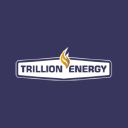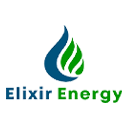Quality Oil and Gas Equities Positioned to Reward in 2025

Oil & gas face geopolitical & oversupply risks but offer FCF & energy security. Growth concerns may limit upside but opportunities exist for disciplined investors.
- Geopolitical instability, tariff threats and oversupply are key trends shaping the oil and gas market in 2025.
- Natural gas prices remain under pressure from oversupply and a moratorium on new LNG export permits in the US.
- Oil prices saw volatility in 2024 but found support from OPEC+ production cuts and recovering demand.
- A Trump presidential victory creates some optimism for US oil production, but companies will remain disciplined.
- Global economic growth forecasts for 2025-26 have been revised down due to expected US policy shifts and trade impacts.
The oil and gas sector is navigating a complex landscape shaped by geopolitics, trade tensions, supply dynamics and evolving demand. As investors look to position their portfolios for the coming years, the energy market presents both challenges and opportunities that warrant a closer examination.
A Tale of Two Commodities
In 2024, oil and natural gas exhibited diverging price trends. Oil saw volatility but maintained a relatively healthy price range, ending the year around US$70-72 per barrel for Brent crude. Natural gas, in contrast, struggled under the weight of a supply glut exacerbated by a moratorium on new US LNG export permits.
"The gas prices this year have been really under pressure. We just have so much associated gas with the oil that's being produced that we just continue to have a glut of natural gas," explained Mike O'Leary, a partner at Hunton Andrews Kurth.[1]
This oversupply challenge is unlikely to abate in the near-term.
"Natural gas suppliers need to work off those inventories - and see prices return to more rational levels - before they could even think of increasing production," said Ernie Miller, CEO of Verde Clean Fuels.[1]
Oil's Resilience
Oil faced its own pressures but ultimately displayed more resilience. Ongoing OPEC+ production cuts and recovering demand in key economies helped buoy prices. The US also continued to see strong output, with 2024 production forecast to average 13.2 million barrels per day.
Geopolitical wildcards like the Israel-Hamas conflict injected some uncertainty into the market. However, oil's relatively stable year is a testament to its status as a global commodity less vulnerable to single-country dynamics.
"Current oil prices are very healthy for Canadian oil and gas producers. We should see consistent ongoing drilling activity on assets with a high rate of return in 2025 if WTI prices stay above US$60," noted Brad Docherty, President & CEO of Source Rock Royalties.[1]
The Trump Effect
The US presidential election of Donald Trump, with his pro-drilling rhetoric, sparked both optimism and uncertainty for the sector.
"Politicians' rhetoric often divorces from reality, and in Trump's case this is no different," said Matthew Cunningham, editor and economist at FocusEconomics. "He probably will succeed in boosting domestic production of oil and gas by issuing more leases for drilling on federal land and scrapping environmental regulations. Nonetheless, he is unlikely to boost output by as much as his 'drill, baby, drill' comment indicates."[1]
Most experts believe companies will maintain the capital discipline hard-learned from past cycles.
"If the US overproduced, OPEC would say, 'We need to defend our market share.' So they might just open their spigots up, and that would further drive prices down," explained O'Leary.[1]
Global Growth Outlook
While the near-term supply and demand outlook appears relatively balanced, the oil and gas sector is not immune from macroeconomic pressures. S&P Global Market Intelligence significantly lowered its growth forecasts for 2025-26 across most key countries and regions.
This largely reflects an expected drag from less favorable US trade policies, tighter financial conditions, and heightened uncertainty. Global real GDP growth is now forecast at 2.5% for 2025 and 2.6% for 2026, down 0.2 percentage points for both years. China, the top driver of oil demand growth, saw a 0.4 percentage point cut to its 2025 outlook.
A slower growth environment could dampen oil demand and make the market more reactive to short-term disruptions. However, the demand thesis for oil and gas remains intact over the long run as developing economies expand energy consumption.
Arrow Exploration
Arrow Exploration (LSE:AXL) is focused on growing oil and gas production in Colombia's prolific Llanos and Middle Magdalena Valley basins. In the Llanos Basin, Arrow has a 50% interest in the Tapir block where it plans to drill up to 6 additional horizontal wells in 2024 and pursue further development in 2025. Recent drilling has delivered strong results, with the Carrizales Norte field horizontals producing over 1,500 bopd per well. Arrow sees significant running room across its acreage with a large prospect inventory. In the Middle Magdalena Valley, Arrow is advancing its Oso Pardo field and evaluating the extension area which could add material production and reserves. With a seasoned management team, attractive fiscal terms in Colombia, and a balanced portfolio of development and exploration, Arrow is well positioned to deliver on its growth objectives in the coming years.
Trillion Energy
Trillion Energy (CSE:TCF) is targeting a significant production ramp-up at its SASB gas field in the Black Sea. The company has a 49% interest in this redevelopment project where it successfully drilled 5 wells in 2022-23 and plans additional perforations, workovers and sidetracks to reach 7-8 MMcf/d by Q2 2025. Trillion's 2P gas reserves increased significantly to 55.8 Bcf, driving a 2P NPV10 of US$421 million. With access to strong regional gas prices around $10/Mcf and a 12.5% royalty rate, SASB offers robust economics for Trillion.
The company is fully funded for its development plans. Trillion is also pursuing a high impact oil exploration program onshore Turkey in the Cudi-Gabar province, with promising well results on adjacent acreage. Investors can look forward to a material free cash flow inflection as SASB production accelerates.
Elixir Energy
Elixir Energy (ASX:EXR) is pioneering coal bed methane (CBM) exploration and development in Mongolia. At its flagship Nomgon IX CBM production sharing contract, Elixir has drilled numerous wells, made a gas discovery and recently commissioned a pilot production program. Located proximal to China's border, this project provides optionality to supply both the Mongolian and Chinese gas markets. Elixir is also accelerating activity in the Bowen Basin in Australia, one of the country's premier gas hubs, through its Gastar (previously Armour Energy) acquisition and farm-in deals. This provides diversity and an earlier revenue opportunity. The Bowen assets include the multi-Tcf potential Gunn project and the Roma Shelf production assets. With an experienced team and supportive institutional investors, Elixir offers investors exposure to both frontier exploration and near-term growth.
Jersey Oil and Gas
Jersey Oil and Gas (LSE:JOG) is advancing the redevelopment of the producing Buchan oil project in the UK North Sea. Jersey has a 100% interest in Buchan, which ceased production in 2017 but has significant remaining resources of over 80 MMbbls. A field development plan has been submitted, targeting first oil in 2025 at a rate of 35,000 bopd. The project carries an NPV of nearly US$1 billion. Jersey is fully funded following farm-out deals with Equinor and NEO Energy in 2022. Additional upside exists in the J2 and Verbier discoveries. With the UK's supportive fiscal regime and high energy security priority, Buchan offers a low-risk, high return investment proposition.
Empire Energy
Empire Energy (ASX:EEG) is focused on developing the multi-Tcf potential of the Beetaloo Basin in Australia's Northern Territory. With nearly 29 million acres, Empire has scale and a durable growth runway in this emerging shale play. Empire and its neighbors have made strong progress delineating the Beetaloo, demonstrating the presence of high quality source rocks, over-pressured zones and conductive natural fractures – all key ingredients for a productive unconventional play. Empire's recent Carpentaria-2H and 3H wells produced at rates of 3-10 MMcf/d, exceeding expectations. The company is advancing its Beetaloo project on multiple fronts – with additional appraisal drilling, a pilot production test planned for 2024 and early work on gas commercialization. With a large prospective resource base and upside from liquids-rich zones, Empire could generate significant value as it proves up the Beetaloo.
The Investment Thesis for Oil and Gas
Key points supporting investment in oil and gas equities include:
- Oil prices are expected to remain above the breakeven levels for many producers, supporting free cash flow generation and shareholder returns
- North American natural gas markets could rebound as LNG exports rise and oversupply is managed
- Geopolitical risks are an ever-present factor but tend to have short-lived impacts, giving investors opportunities to acquire quality assets at a discount
- Energy security concerns support continued investment in stable oil and gas supply to complement the long-term energy transition
- Companies across the sector are increasing capital discipline, reducing debt and focusing on profitable, lower-risk projects
Risks to monitor include:
- An unexpected surge in US production that significantly shifts the global supply balance
- A faster-than-expected slowdown in developing economy oil demand growth
- Outsized impacts from a potential global recession on energy demand
- Regulatory changes by a new US administration impacting pipeline projects and natural gas export logistics
- Any loss of cohesion in the OPEC+ alliance leading to a battle for market share and lower prices
The oil and gas sector is navigating a dynamic environment marked by geopolitical uncertainties, evolving trade flows and shifting growth outlooks. While natural gas faces near-term oversupply challenges, oil prices have shown resilience and continue to support healthy producer economics. The demand outlook remains positive over the long run despite some expected global growth moderation. Risks remain, but investors can find opportunities by focusing on disciplined companies with strong assets and the flexibility to navigate short-term volatility. The energy sector's role in maintaining energy security suggests it will continue to draw investor interest even as the world pursues a multi-decade transition to a more diversified energy mix.
References:
- Williams, G. (December 2024). Investing News Network. Oil and Gas Price Forecast: Top Trends for Oil and Gas in 2025
- Wattret, K. (December 2024). S&P Global. Global Economic Outlook: December 2024
Analyst's Notes




Subscribe to Our Channel
Stay Informed

















